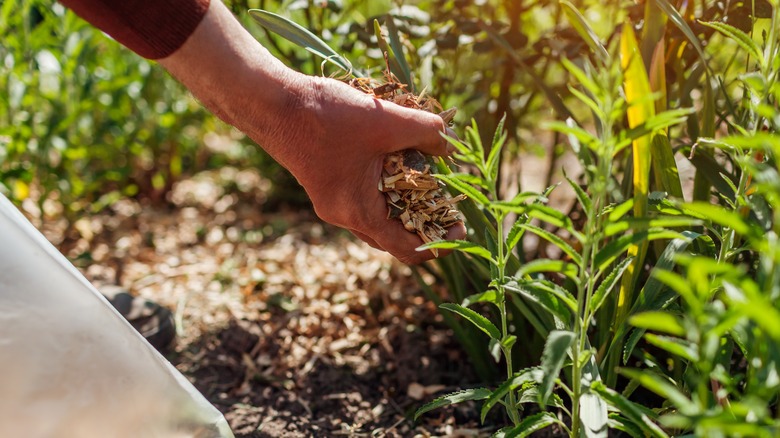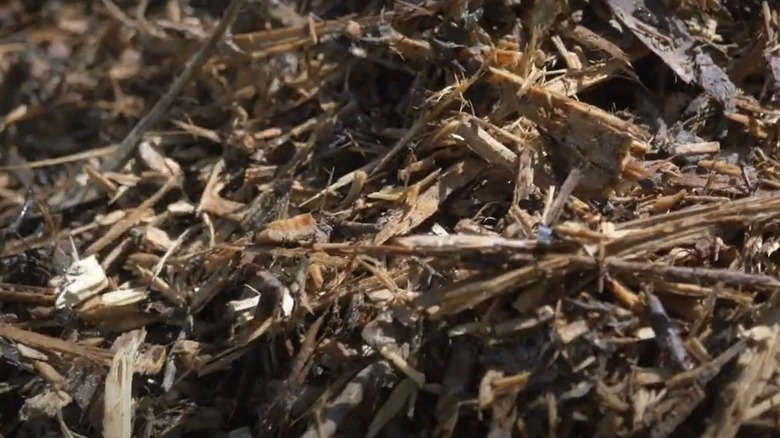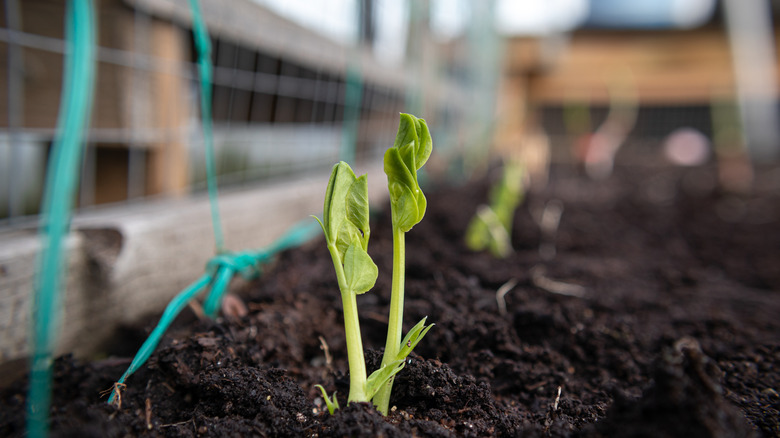What Are Ramial Wood Chips And How Do You Make Them?
If you own a garden or tend to plants around your home, you've probably heard of tons of ways to fertilize, mulch, or improve your soil. So why don't we add one more to that list? Ever heard of ramial wood chips?
The word "ramial" is derived from the Latin word "ramus," meaning "branch." Ramial wood chips (RWC) are a specialized type of mulch made from the small, green branches of deciduous trees, typically those less than 2 ½ inches in diameter. Unlike traditional wood chips made from trunks or older branches, RWCs are packed with nutrients because they include a higher concentration of leaves, buds, and young bark. These chips decompose much faster than bark or hardwood mulch and feed the soil rather than just covering it. This technique originated in Canada in the 1970s and has gained traction among permaculture gardeners, orchard keepers, and organic growers.
To make ramial wood chips, all you need is a wood chipper and access to freshly pruned deciduous branches like maple, birch, or poplar. It's important to avoid trunks and overly thick pieces. This is because they lack the biological richness that makes RWCs so effective. If you don't have a chipper, you could cut the branches really small so that they lie flat on the ground. The next step is to spread a 1- to 2-inch layer over your garden beds or around fruit trees, preferably in the fall season. You should know that the source of your wood chips matters. Avoid conifer trees, black walnut, or treated wood, which can introduce toxins or unbalanced pH into your garden.
Why ramial wood chips might be exactly what your soil needs
If you're gardening for the long haul, using ramial wood chips (RWC) is one of your best tips for growing a healthy and self-sustaining soil that improves year after year. This is because it is obtained from young branches that contain higher amounts of cellulose, lignin, and minerals. This abundance of minerals is what helps to build long-term soil structure. RWCs create a fungal-dominant soil profile because, as the chips decompose, they become food for fungi and bacteria, kickstarting a healthier soil web. RWCs are especially beneficial in orchards or permaculture beds, where you're building fertility over time and not constantly disturbing the soil.
Water retention, soil porosity, and aeration are also improved as the chips help hold moisture without compacting the soil. This is perfect for dry or sloped gardens. In sloped areas, RWCs also reduce soil erosion because, with time, the mulch layer forms a sponge-like buffer that keeps soil from washing away. These ramial wood chips are also a great way to get rid of weeds in your garden. Finally, plants like sweet potato and tomato show improved yield when ramial wood chips are used.
The downsides of ramial wood chips and when to skip them
While ramial wood chips are a great soil-building tool, don't make the mulching mistake of thinking they're perfect for every situation. Before dumping them all over your garden beds, there are some things you need to know about where they fall short. There's the issue of temporary nitrogen lock-up, which occurs because RWCs are high in carbon and low in nitrogen, so they can draw nitrogen from the soil as they decompose. This is mostly a concern when you mix the chips directly into the soil, not when used as surface mulch. For nitrogen-hungry plants (like lettuce or peppers), this could stunt early growth. It is also not great for shallow-rooted veggies.
Another downside is that RWC takes longer to decompose compared to compost or shredded leaves. If you're expecting fast nutrient release, you might be disappointed in the short term. Therefore, RWCs might not be ideal for seed-starting beds or in cases where fast nutrient turnover is needed.


